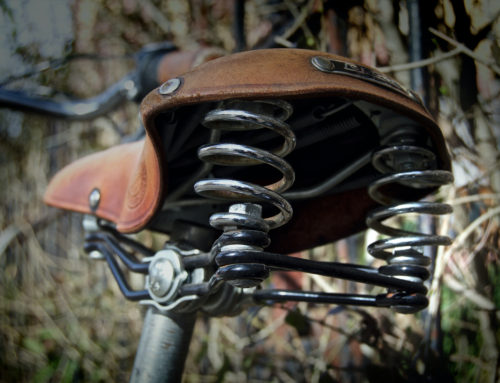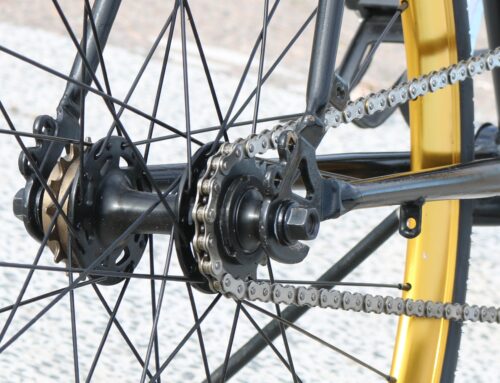The vast majority of bicycles use either a freewheel or a cassette system (Freehub) on the rear hub. At first glance there is not much difference between the two. In contrast to the fixed-gear hubs and the counter-pedal hubs, the freewheel and the cassette allow riding without pedalling and even turning the pedals in the opposite direction, as well as the use of one or more gears. However, they are very different. Knowing their differences can save us unnecessary costs and time. Below we share with you the main characteristics of each of these systems so that you can identify which one your bike is equipped with.
Freewheel
This is the most traditional system. Today, the vast majority of lower-middle range bicycles still use this system.
Technically the freewheel is the unit consisting of the ratchet mechanism and the sprocket(s). It has an internal thread which bolts directly to the rear hub. The sprockets of the freewheel can only be found as a cluster, so it is necessary to change the whole set in case the teeth are worn or a different gear ratio is desired.
Main features
-The hub has a right hand thread to hold the freewheel.
-The freewheel consists of the ratchet mechanism and one or more sprockets (typically 5 – 7 sprockets).
-It is necessary to replace the whole set of sprockets when they are worn or a different gear ratio is desired.
Freewheel Disassembly and Installation
To remove the freewheel you will need a special die, commonly known as a freewheel puller, to be able to turn the freewheel from the inside. There are different extractors for different makes of freewheel, so it is important to make sure you use the right one
1.Remove the nut on the right side of the hub axle.
2.Fit the appropriate puller so that the splines fit perfectly into the splines of the freewheel.
3.Replace the nut on the axle, leaving some slack, in order to prevent the puller from moving and damaging the freewheel.
4.Use a spanner or vice to hold the extractor and turn it counterclockwise.
Remove the freewheel.
No tools are required for installation. Simply screw on the freewheel and tighten it clockwise. If you like, you can use the puller and a spanner to tighten it, but it is not necessary as the tension of the chain will tighten the thread as you pedal.
Cassette
Unlike the Freehub, this system incorporates the ratchet mechanism directly into the sprocket. Generally the sprockets for this system are sold in sets which are called “Cassette”. This consists of a series of sprockets and spacers usually held together by rivets or screws. The rivets that join the sprockets together are not actually necessary, they simply serve to keep the sprockets in order. It is also possible to find the sprockets individually.
Main features
-The ratchet mechanism is built directly into the hub (right side).
-The cassette is the set of sprockets and spacers (commonly 7 – 10 sprockets).
-Sprockets can be replaced individually.
Disassembly and installation of the Cassette
To remove the cassette you will need a cassette puller and a chain spanner to prevent the cassette from turning when loosening the thread.
1.Remove the nut on the right side of the axle.
2.Fit the appropriate puller so that the splines fit perfectly on the spline of the cassette.
3.Replace the nut on the axle, leaving some slack to prevent the puller from moving and damaging the spline.
4.Hold the cassette with the chain spanner.
5.Use a spanner to turn the puller counterclockwise.
6.Remove the thread that holds the cassette, the sprockets and the spacers that make up the cassette.
To install the cassette, be careful to position the spacers and sprockets in the correct order. All sprockets and spacers have a particular knurling that prevents them from being placed in the wrong position.





